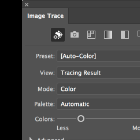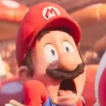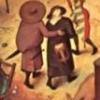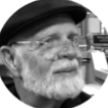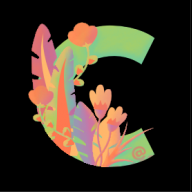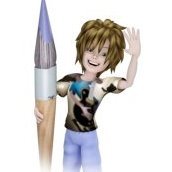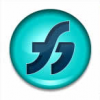-
Posts
38 -
Joined
-
Last visited
Reputation Activity
-
 diopside got a reaction from oscarlosan in How to I change Redo back to Ctrl+Y?
diopside got a reaction from oscarlosan in How to I change Redo back to Ctrl+Y?
Of all the non-sensical and regressive changes introduced in Version 2, this one is by far the most ridiculous. CTRL+Z and CTRL+Y are without a doubt the 2 most used keyboard shortcuts for any Windows user in literally EVERY application. Suddenly overriding one of these keyboard shortcuts so it instead toggles an obscure view function in your own software instead of the standard OS function that 99% of windows users expect it to do demonstrates an *ASTOUNDING* lack of UX insight and/or arrogance. Did you guys do any UX testing whatsoever for Windows users for Version 2?
-
 diopside got a reaction from thegary in V2 Designer 2.0.4 Very slow between choosing objects. All of them.
diopside got a reaction from thegary in V2 Designer 2.0.4 Very slow between choosing objects. All of them.
Unfortunately this video was made using the newest Beta and the issue is just as bad as its always been.
I'm also using the software renderer in the video to eliminate any hardware acceleration problems as possible culprits.
I am not optimistic about it being fixed anytime soon. Even w the video they just say "well its not reproducible on our end ..." as if that is the absolute end of the road for troubleshooting. The utter lack of reassurance that they are looking more into it, or really *any* expression of concern whatsoever, suggests that Affinity thinks the issue is machine-specific and not directly related to version 2. Yet they can offer no explanations of why version 1 of the software works like a dream on the exact same machine.
-
 diopside got a reaction from Aeromachinator in V2 Designer 2.0.4 Very slow between choosing objects. All of them.
diopside got a reaction from Aeromachinator in V2 Designer 2.0.4 Very slow between choosing objects. All of them.
I finally was able to get a video that illustrates the problem very clearly.
Project file is brand new and literally all it has is curves and text objects. Less than 20 of each. Nothing was pasted from outside the program. This isn't as severe as it CAN get but its still pretty obvious on this very simple project, so you can imagine how bad it gets trying to work on anything remotely complex.
Note how selections of other objects in the same layer or group are nearly instantaneous, but selecting anything in a different layer or group, or even just double clicking the background to deselect everything, has about a 0.5 second lag.
https://drive.google.com/file/d/1NhddcTWrmw5IlJQUhYRYa7TtNaRIqJ3p/view?usp=sharing
selection_lag_affinity_2.webm -
 diopside got a reaction from thegary in V2 Designer 2.0.4 Very slow between choosing objects. All of them.
diopside got a reaction from thegary in V2 Designer 2.0.4 Very slow between choosing objects. All of them.
Just this morning I experienced the exact same sort of slowdown / lag w/ the newest beta, and with a document that I never imported or copied anything into. I just drew shapes (some cubes) from scratch and within 20 mins the program was already becoming unusable. This is with a document that literally has nothing else other than 8 curves. All drawn /cut from within affinity. I have saved the project file and if i can get it to happen again repeatedly w/ this project file i think i will send it to Affinity .
I've also noticed that when this problem rears its head, the program does not want to shut down properly. After closing it will often hang around in the task manager for several minutes (if not indefinitely) unless you nuke the process w/ task manager. I'm used to this happening when working on massive rasters in Affinity Photo that are understandably gobbling up all my ram, but as mentioned previously.... 8 curves...
-
 diopside got a reaction from thegary in V2 Designer 2.0.4 Very slow between choosing objects. All of them.
diopside got a reaction from thegary in V2 Designer 2.0.4 Very slow between choosing objects. All of them.
I finally was able to get a video that illustrates the problem very clearly.
Project file is brand new and literally all it has is curves and text objects. Less than 20 of each. Nothing was pasted from outside the program. This isn't as severe as it CAN get but its still pretty obvious on this very simple project, so you can imagine how bad it gets trying to work on anything remotely complex.
Note how selections of other objects in the same layer or group are nearly instantaneous, but selecting anything in a different layer or group, or even just double clicking the background to deselect everything, has about a 0.5 second lag.
https://drive.google.com/file/d/1NhddcTWrmw5IlJQUhYRYa7TtNaRIqJ3p/view?usp=sharing
selection_lag_affinity_2.webm -
 diopside got a reaction from Aeromachinator in V2 Designer 2.0.4 Very slow between choosing objects. All of them.
diopside got a reaction from Aeromachinator in V2 Designer 2.0.4 Very slow between choosing objects. All of them.
are you also using lots of Text objects in these documents Gary? if yes have you ever noticed it w/ no text at all?
I ask because every now and then I will get immense lag / slowdown in a few documents that are very simple and almost entirely simple vector shapes and text frames + art text. When that happens, toggling certain snapping settings or excluding some layers from snapping does seem to have a noticeable effect on the lag, but unfortunately it never reduces it enough to make the program usable again. this doesn't seem to be the case w/ the vector art slowdowns, but I guess that would make sense since the text frames im working with in this context have waaaay more vertices/geometry to snap against than the vector shapes.
one thing I have noticed is that when the slowdowns are at their peak and the program is basically unusable, the biggest selection lags, by far, come when you have an object in some group or layer selected, and then you click/double click on a different object in a different group or layer. This can frequently take 3-5 seconds. Yet, even when we're in 5 second lag territory, selecting objects in the same group or layer seems to *almost always* happen at the expected speed . Not sure if any of that could be helpful
i got a new gig recently so I will likely be spending lots more time in AD/AP over the next few months , im optimistic that i can get this one reproducible
edit: i just found the other 5+ page thread about this bug w/ many saying it goes back to V1. So i take back that part about being optimistic lol
-
 diopside reacted to Balakov in Affinity Designer V2 getting really slow and laggy after some time
diopside reacted to Balakov in Affinity Designer V2 getting really slow and laggy after some time
I've been having this issue for years dating back to Designer V1 and the same issue has remained in V2. My job is making .NET Windows software so I've done some performance captures during the slowdown which hopefully might give the developers a bit more insight. I don't work with very heavy scenes, my normal workflow is to create a few scratchpad artboards, drop some reference images and then use the pen and shape tools to make my designs. I'm generally not using any advanced features.
The first perf capture is after about an hour or working. At this point clicking on objects is taking about 1 second to register and about the same time to switch tools. Memory use is around 3GB on a 32Gb machine (Designer is allowed 16GB in the settings). Dragging things around is very choppy. If I restart Designer everything comes back up to speed and memory usage drops to around 800MB. Not sure if that's relevant as the undo buffer won't be using any RAM on a fresh boot. The second attached image is the perf capture after a fresh boot with the same scene loaded.
An interesting new symptom that has appeared in V2 is that the Designer process no longer exits properly when it's got into this slow state. I have to kill it with the Task Manager before I can launch it again. The application window is not visible, only the process still exists.
The culprit in both cases seems to be Serif.Interop.Persona.DisposableResources.Find() which, in my naive interpretation sounds like a memory leak or cycle in the Garbage Collector. If I break the debugger while the process is trying to exit it never leaves that Find() method.
Anyway, hope that helps. Happy do do any more testing as this happens pretty much every time I do any work in Designer.
-
 diopside got a reaction from Old Bruce in V2 Designer 2.0.4 Very slow between choosing objects. All of them.
diopside got a reaction from Old Bruce in V2 Designer 2.0.4 Very slow between choosing objects. All of them.
thanks ill try to do that tonight or tomorrow
To eliminate as many potential sources of error/influence as possible ive been trying to see if i can recreate the behavior in a totally new blank project by drawing and manipulating vector shapes manually until the project is comparable detail/complexity to the one that was giving me so much trouble. So far I haven't been able to get it to lag like this. Not a very conclusive test I know but I'm wondering if the problem might arise from imported/copy pasted vector art from other sources. When im designing i often am furiously copy-pasting vector art/markup between apps and the browser ... no telling what that svg markup could drag in
-
 diopside got a reaction from Patrick Connor in V2 Designer 2.0.4 Very slow between choosing objects. All of them.
diopside got a reaction from Patrick Connor in V2 Designer 2.0.4 Very slow between choosing objects. All of them.
thanks ill try to do that tonight or tomorrow
To eliminate as many potential sources of error/influence as possible ive been trying to see if i can recreate the behavior in a totally new blank project by drawing and manipulating vector shapes manually until the project is comparable detail/complexity to the one that was giving me so much trouble. So far I haven't been able to get it to lag like this. Not a very conclusive test I know but I'm wondering if the problem might arise from imported/copy pasted vector art from other sources. When im designing i often am furiously copy-pasting vector art/markup between apps and the browser ... no telling what that svg markup could drag in
-
 diopside got a reaction from Paul Mudditt in V2 Designer 2.0.4 Very slow between choosing objects. All of them.
diopside got a reaction from Paul Mudditt in V2 Designer 2.0.4 Very slow between choosing objects. All of them.
Just had a minute to test the newest Beta and its giving me a MASSIVE performance improvement. I'm not noticing any lag at all anymore (yet?). I'll update here if it changes
-
 diopside got a reaction from pgraficzny in Anyone else using Designer and/or Photo for cartography / mapmaking? (Example)
diopside got a reaction from pgraficzny in Anyone else using Designer and/or Photo for cartography / mapmaking? (Example)
I'm curious if anyone else out there is using Affinity products for making maps? These days , probably >95% of cartographers make their maps almost entirely within GIS software, but I was always frustrated by the limited options and lack of precision for controlling stylistic elements on maps in those software suites (both QGIS and ArcGIS), so I figured why not outsource the styling to Affinity products
For those unfamiliar, mapmaking is not unlike standard graphic design. You have a document comprised of a bunch of different layers, some of which can be vector (like road lines, point data, etc.) and some of which can be raster (like elevation maps, aerial imagery, etc.). The only real difference is they are all encoded with spatial information. So what I started doing is using the GIS software just to compile and size (spatially aware trim/crop) all my different layers of geographic data, and then exporting a bunch of identically-sized layers that I then reassemble in AD / AP (i.e export a PDF of *just* the road lines, export another PDF of *just* the water body polygons, export a PNG of *just* the aerial imagery, etc.). As long as I maintain identical pixel dimensions for the exported raster layers, and identical aspect ratios for the vector layers, maintaining the appropriate map scale / size and reassembling the layers in AD/AP is trivial. Once I have all the data in AD/AP, I can take advantage of those graphic design features that GIS software could never hope to do, like advanced masking and layer blending modes, brush-based editing, pixel-perfect label placement (HUGE), etc. Another great thing is this method gives you ultimate control over design of the map frame and you're not stuck using the preset layouts and scalebars that are baked into GIS software suites.
The included example is a map I made for my mother last Christmas of the area where her ancestors settled 150ish years ago. Its sort of like a modern take on the classic USGS topo map styles from the 50's-80's.
(there are two typos I'm aware of, 'prairie' is misspelled in both instances, and 'convenience' is written as 'convenient' in the legend... if you see anymore, let me know!)
cheers
-
 diopside got a reaction from peter in Anyone else using Designer and/or Photo for cartography / mapmaking? (Example)
diopside got a reaction from peter in Anyone else using Designer and/or Photo for cartography / mapmaking? (Example)
I'm curious if anyone else out there is using Affinity products for making maps? These days , probably >95% of cartographers make their maps almost entirely within GIS software, but I was always frustrated by the limited options and lack of precision for controlling stylistic elements on maps in those software suites (both QGIS and ArcGIS), so I figured why not outsource the styling to Affinity products
For those unfamiliar, mapmaking is not unlike standard graphic design. You have a document comprised of a bunch of different layers, some of which can be vector (like road lines, point data, etc.) and some of which can be raster (like elevation maps, aerial imagery, etc.). The only real difference is they are all encoded with spatial information. So what I started doing is using the GIS software just to compile and size (spatially aware trim/crop) all my different layers of geographic data, and then exporting a bunch of identically-sized layers that I then reassemble in AD / AP (i.e export a PDF of *just* the road lines, export another PDF of *just* the water body polygons, export a PNG of *just* the aerial imagery, etc.). As long as I maintain identical pixel dimensions for the exported raster layers, and identical aspect ratios for the vector layers, maintaining the appropriate map scale / size and reassembling the layers in AD/AP is trivial. Once I have all the data in AD/AP, I can take advantage of those graphic design features that GIS software could never hope to do, like advanced masking and layer blending modes, brush-based editing, pixel-perfect label placement (HUGE), etc. Another great thing is this method gives you ultimate control over design of the map frame and you're not stuck using the preset layouts and scalebars that are baked into GIS software suites.
The included example is a map I made for my mother last Christmas of the area where her ancestors settled 150ish years ago. Its sort of like a modern take on the classic USGS topo map styles from the 50's-80's.
(there are two typos I'm aware of, 'prairie' is misspelled in both instances, and 'convenience' is written as 'convenient' in the legend... if you see anymore, let me know!)
cheers
-
 diopside got a reaction from DEWLine in Anyone else using Designer and/or Photo for cartography / mapmaking? (Example)
diopside got a reaction from DEWLine in Anyone else using Designer and/or Photo for cartography / mapmaking? (Example)
I'm curious if anyone else out there is using Affinity products for making maps? These days , probably >95% of cartographers make their maps almost entirely within GIS software, but I was always frustrated by the limited options and lack of precision for controlling stylistic elements on maps in those software suites (both QGIS and ArcGIS), so I figured why not outsource the styling to Affinity products
For those unfamiliar, mapmaking is not unlike standard graphic design. You have a document comprised of a bunch of different layers, some of which can be vector (like road lines, point data, etc.) and some of which can be raster (like elevation maps, aerial imagery, etc.). The only real difference is they are all encoded with spatial information. So what I started doing is using the GIS software just to compile and size (spatially aware trim/crop) all my different layers of geographic data, and then exporting a bunch of identically-sized layers that I then reassemble in AD / AP (i.e export a PDF of *just* the road lines, export another PDF of *just* the water body polygons, export a PNG of *just* the aerial imagery, etc.). As long as I maintain identical pixel dimensions for the exported raster layers, and identical aspect ratios for the vector layers, maintaining the appropriate map scale / size and reassembling the layers in AD/AP is trivial. Once I have all the data in AD/AP, I can take advantage of those graphic design features that GIS software could never hope to do, like advanced masking and layer blending modes, brush-based editing, pixel-perfect label placement (HUGE), etc. Another great thing is this method gives you ultimate control over design of the map frame and you're not stuck using the preset layouts and scalebars that are baked into GIS software suites.
The included example is a map I made for my mother last Christmas of the area where her ancestors settled 150ish years ago. Its sort of like a modern take on the classic USGS topo map styles from the 50's-80's.
(there are two typos I'm aware of, 'prairie' is misspelled in both instances, and 'convenience' is written as 'convenient' in the legend... if you see anymore, let me know!)
cheers
-
 diopside got a reaction from Ren De in Anyone else using Designer and/or Photo for cartography / mapmaking? (Example)
diopside got a reaction from Ren De in Anyone else using Designer and/or Photo for cartography / mapmaking? (Example)
I'm curious if anyone else out there is using Affinity products for making maps? These days , probably >95% of cartographers make their maps almost entirely within GIS software, but I was always frustrated by the limited options and lack of precision for controlling stylistic elements on maps in those software suites (both QGIS and ArcGIS), so I figured why not outsource the styling to Affinity products
For those unfamiliar, mapmaking is not unlike standard graphic design. You have a document comprised of a bunch of different layers, some of which can be vector (like road lines, point data, etc.) and some of which can be raster (like elevation maps, aerial imagery, etc.). The only real difference is they are all encoded with spatial information. So what I started doing is using the GIS software just to compile and size (spatially aware trim/crop) all my different layers of geographic data, and then exporting a bunch of identically-sized layers that I then reassemble in AD / AP (i.e export a PDF of *just* the road lines, export another PDF of *just* the water body polygons, export a PNG of *just* the aerial imagery, etc.). As long as I maintain identical pixel dimensions for the exported raster layers, and identical aspect ratios for the vector layers, maintaining the appropriate map scale / size and reassembling the layers in AD/AP is trivial. Once I have all the data in AD/AP, I can take advantage of those graphic design features that GIS software could never hope to do, like advanced masking and layer blending modes, brush-based editing, pixel-perfect label placement (HUGE), etc. Another great thing is this method gives you ultimate control over design of the map frame and you're not stuck using the preset layouts and scalebars that are baked into GIS software suites.
The included example is a map I made for my mother last Christmas of the area where her ancestors settled 150ish years ago. Its sort of like a modern take on the classic USGS topo map styles from the 50's-80's.
(there are two typos I'm aware of, 'prairie' is misspelled in both instances, and 'convenience' is written as 'convenient' in the legend... if you see anymore, let me know!)
cheers
-
 diopside got a reaction from Cealcrest in Anyone else using Designer and/or Photo for cartography / mapmaking? (Example)
diopside got a reaction from Cealcrest in Anyone else using Designer and/or Photo for cartography / mapmaking? (Example)
I'm curious if anyone else out there is using Affinity products for making maps? These days , probably >95% of cartographers make their maps almost entirely within GIS software, but I was always frustrated by the limited options and lack of precision for controlling stylistic elements on maps in those software suites (both QGIS and ArcGIS), so I figured why not outsource the styling to Affinity products
For those unfamiliar, mapmaking is not unlike standard graphic design. You have a document comprised of a bunch of different layers, some of which can be vector (like road lines, point data, etc.) and some of which can be raster (like elevation maps, aerial imagery, etc.). The only real difference is they are all encoded with spatial information. So what I started doing is using the GIS software just to compile and size (spatially aware trim/crop) all my different layers of geographic data, and then exporting a bunch of identically-sized layers that I then reassemble in AD / AP (i.e export a PDF of *just* the road lines, export another PDF of *just* the water body polygons, export a PNG of *just* the aerial imagery, etc.). As long as I maintain identical pixel dimensions for the exported raster layers, and identical aspect ratios for the vector layers, maintaining the appropriate map scale / size and reassembling the layers in AD/AP is trivial. Once I have all the data in AD/AP, I can take advantage of those graphic design features that GIS software could never hope to do, like advanced masking and layer blending modes, brush-based editing, pixel-perfect label placement (HUGE), etc. Another great thing is this method gives you ultimate control over design of the map frame and you're not stuck using the preset layouts and scalebars that are baked into GIS software suites.
The included example is a map I made for my mother last Christmas of the area where her ancestors settled 150ish years ago. Its sort of like a modern take on the classic USGS topo map styles from the 50's-80's.
(there are two typos I'm aware of, 'prairie' is misspelled in both instances, and 'convenience' is written as 'convenient' in the legend... if you see anymore, let me know!)
cheers
-
 diopside got a reaction from Smee Again in Anyone else using Designer and/or Photo for cartography / mapmaking? (Example)
diopside got a reaction from Smee Again in Anyone else using Designer and/or Photo for cartography / mapmaking? (Example)
I'm curious if anyone else out there is using Affinity products for making maps? These days , probably >95% of cartographers make their maps almost entirely within GIS software, but I was always frustrated by the limited options and lack of precision for controlling stylistic elements on maps in those software suites (both QGIS and ArcGIS), so I figured why not outsource the styling to Affinity products
For those unfamiliar, mapmaking is not unlike standard graphic design. You have a document comprised of a bunch of different layers, some of which can be vector (like road lines, point data, etc.) and some of which can be raster (like elevation maps, aerial imagery, etc.). The only real difference is they are all encoded with spatial information. So what I started doing is using the GIS software just to compile and size (spatially aware trim/crop) all my different layers of geographic data, and then exporting a bunch of identically-sized layers that I then reassemble in AD / AP (i.e export a PDF of *just* the road lines, export another PDF of *just* the water body polygons, export a PNG of *just* the aerial imagery, etc.). As long as I maintain identical pixel dimensions for the exported raster layers, and identical aspect ratios for the vector layers, maintaining the appropriate map scale / size and reassembling the layers in AD/AP is trivial. Once I have all the data in AD/AP, I can take advantage of those graphic design features that GIS software could never hope to do, like advanced masking and layer blending modes, brush-based editing, pixel-perfect label placement (HUGE), etc. Another great thing is this method gives you ultimate control over design of the map frame and you're not stuck using the preset layouts and scalebars that are baked into GIS software suites.
The included example is a map I made for my mother last Christmas of the area where her ancestors settled 150ish years ago. Its sort of like a modern take on the classic USGS topo map styles from the 50's-80's.
(there are two typos I'm aware of, 'prairie' is misspelled in both instances, and 'convenience' is written as 'convenient' in the legend... if you see anymore, let me know!)
cheers
-
 diopside got a reaction from symbiont in Anyone else using Designer and/or Photo for cartography / mapmaking? (Example)
diopside got a reaction from symbiont in Anyone else using Designer and/or Photo for cartography / mapmaking? (Example)
I'm curious if anyone else out there is using Affinity products for making maps? These days , probably >95% of cartographers make their maps almost entirely within GIS software, but I was always frustrated by the limited options and lack of precision for controlling stylistic elements on maps in those software suites (both QGIS and ArcGIS), so I figured why not outsource the styling to Affinity products
For those unfamiliar, mapmaking is not unlike standard graphic design. You have a document comprised of a bunch of different layers, some of which can be vector (like road lines, point data, etc.) and some of which can be raster (like elevation maps, aerial imagery, etc.). The only real difference is they are all encoded with spatial information. So what I started doing is using the GIS software just to compile and size (spatially aware trim/crop) all my different layers of geographic data, and then exporting a bunch of identically-sized layers that I then reassemble in AD / AP (i.e export a PDF of *just* the road lines, export another PDF of *just* the water body polygons, export a PNG of *just* the aerial imagery, etc.). As long as I maintain identical pixel dimensions for the exported raster layers, and identical aspect ratios for the vector layers, maintaining the appropriate map scale / size and reassembling the layers in AD/AP is trivial. Once I have all the data in AD/AP, I can take advantage of those graphic design features that GIS software could never hope to do, like advanced masking and layer blending modes, brush-based editing, pixel-perfect label placement (HUGE), etc. Another great thing is this method gives you ultimate control over design of the map frame and you're not stuck using the preset layouts and scalebars that are baked into GIS software suites.
The included example is a map I made for my mother last Christmas of the area where her ancestors settled 150ish years ago. Its sort of like a modern take on the classic USGS topo map styles from the 50's-80's.
(there are two typos I'm aware of, 'prairie' is misspelled in both instances, and 'convenience' is written as 'convenient' in the legend... if you see anymore, let me know!)
cheers
-
 diopside got a reaction from SrPx in Anyone else using Designer and/or Photo for cartography / mapmaking? (Example)
diopside got a reaction from SrPx in Anyone else using Designer and/or Photo for cartography / mapmaking? (Example)
Here is another example in a similar vein.
I started with an archival scan of a 1978 geologic(al) map of Nevada and used Affinity Photo to clean it up (removing stains, stamps, handwriting, stickers, etc.). Then I used Blender to render the map image onto a 3D mesh prepared from modern elevation data, followed by a final touch-up in Affinity Photo. Compare to the source image here: https://ngmdb.usgs.gov/Prodesc/proddesc_16377.htm
I'm still experimenting with how to get my added / edited text to perfectly blend in appearance-wise with the older scanned text. I tried a combination of the slightest gaussian blur and outer glow effects. Its passable at a glance, but the difference is quite noticeable at higher zoom levels.
-
 diopside got a reaction from SrPx in Anyone else using Designer and/or Photo for cartography / mapmaking? (Example)
diopside got a reaction from SrPx in Anyone else using Designer and/or Photo for cartography / mapmaking? (Example)
I'm curious if anyone else out there is using Affinity products for making maps? These days , probably >95% of cartographers make their maps almost entirely within GIS software, but I was always frustrated by the limited options and lack of precision for controlling stylistic elements on maps in those software suites (both QGIS and ArcGIS), so I figured why not outsource the styling to Affinity products
For those unfamiliar, mapmaking is not unlike standard graphic design. You have a document comprised of a bunch of different layers, some of which can be vector (like road lines, point data, etc.) and some of which can be raster (like elevation maps, aerial imagery, etc.). The only real difference is they are all encoded with spatial information. So what I started doing is using the GIS software just to compile and size (spatially aware trim/crop) all my different layers of geographic data, and then exporting a bunch of identically-sized layers that I then reassemble in AD / AP (i.e export a PDF of *just* the road lines, export another PDF of *just* the water body polygons, export a PNG of *just* the aerial imagery, etc.). As long as I maintain identical pixel dimensions for the exported raster layers, and identical aspect ratios for the vector layers, maintaining the appropriate map scale / size and reassembling the layers in AD/AP is trivial. Once I have all the data in AD/AP, I can take advantage of those graphic design features that GIS software could never hope to do, like advanced masking and layer blending modes, brush-based editing, pixel-perfect label placement (HUGE), etc. Another great thing is this method gives you ultimate control over design of the map frame and you're not stuck using the preset layouts and scalebars that are baked into GIS software suites.
The included example is a map I made for my mother last Christmas of the area where her ancestors settled 150ish years ago. Its sort of like a modern take on the classic USGS topo map styles from the 50's-80's.
(there are two typos I'm aware of, 'prairie' is misspelled in both instances, and 'convenience' is written as 'convenient' in the legend... if you see anymore, let me know!)
cheers
-
 diopside got a reaction from etiennepisano2862 in Anyone else using Designer and/or Photo for cartography / mapmaking? (Example)
diopside got a reaction from etiennepisano2862 in Anyone else using Designer and/or Photo for cartography / mapmaking? (Example)
Here is another example in a similar vein.
I started with an archival scan of a 1978 geologic(al) map of Nevada and used Affinity Photo to clean it up (removing stains, stamps, handwriting, stickers, etc.). Then I used Blender to render the map image onto a 3D mesh prepared from modern elevation data, followed by a final touch-up in Affinity Photo. Compare to the source image here: https://ngmdb.usgs.gov/Prodesc/proddesc_16377.htm
I'm still experimenting with how to get my added / edited text to perfectly blend in appearance-wise with the older scanned text. I tried a combination of the slightest gaussian blur and outer glow effects. Its passable at a glance, but the difference is quite noticeable at higher zoom levels.
-
 diopside got a reaction from etiennepisano2862 in Anyone else using Designer and/or Photo for cartography / mapmaking? (Example)
diopside got a reaction from etiennepisano2862 in Anyone else using Designer and/or Photo for cartography / mapmaking? (Example)
I'm curious if anyone else out there is using Affinity products for making maps? These days , probably >95% of cartographers make their maps almost entirely within GIS software, but I was always frustrated by the limited options and lack of precision for controlling stylistic elements on maps in those software suites (both QGIS and ArcGIS), so I figured why not outsource the styling to Affinity products
For those unfamiliar, mapmaking is not unlike standard graphic design. You have a document comprised of a bunch of different layers, some of which can be vector (like road lines, point data, etc.) and some of which can be raster (like elevation maps, aerial imagery, etc.). The only real difference is they are all encoded with spatial information. So what I started doing is using the GIS software just to compile and size (spatially aware trim/crop) all my different layers of geographic data, and then exporting a bunch of identically-sized layers that I then reassemble in AD / AP (i.e export a PDF of *just* the road lines, export another PDF of *just* the water body polygons, export a PNG of *just* the aerial imagery, etc.). As long as I maintain identical pixel dimensions for the exported raster layers, and identical aspect ratios for the vector layers, maintaining the appropriate map scale / size and reassembling the layers in AD/AP is trivial. Once I have all the data in AD/AP, I can take advantage of those graphic design features that GIS software could never hope to do, like advanced masking and layer blending modes, brush-based editing, pixel-perfect label placement (HUGE), etc. Another great thing is this method gives you ultimate control over design of the map frame and you're not stuck using the preset layouts and scalebars that are baked into GIS software suites.
The included example is a map I made for my mother last Christmas of the area where her ancestors settled 150ish years ago. Its sort of like a modern take on the classic USGS topo map styles from the 50's-80's.
(there are two typos I'm aware of, 'prairie' is misspelled in both instances, and 'convenience' is written as 'convenient' in the legend... if you see anymore, let me know!)
cheers
-
 diopside got a reaction from Ogma in Anyone else using Designer and/or Photo for cartography / mapmaking? (Example)
diopside got a reaction from Ogma in Anyone else using Designer and/or Photo for cartography / mapmaking? (Example)
I'm curious if anyone else out there is using Affinity products for making maps? These days , probably >95% of cartographers make their maps almost entirely within GIS software, but I was always frustrated by the limited options and lack of precision for controlling stylistic elements on maps in those software suites (both QGIS and ArcGIS), so I figured why not outsource the styling to Affinity products
For those unfamiliar, mapmaking is not unlike standard graphic design. You have a document comprised of a bunch of different layers, some of which can be vector (like road lines, point data, etc.) and some of which can be raster (like elevation maps, aerial imagery, etc.). The only real difference is they are all encoded with spatial information. So what I started doing is using the GIS software just to compile and size (spatially aware trim/crop) all my different layers of geographic data, and then exporting a bunch of identically-sized layers that I then reassemble in AD / AP (i.e export a PDF of *just* the road lines, export another PDF of *just* the water body polygons, export a PNG of *just* the aerial imagery, etc.). As long as I maintain identical pixel dimensions for the exported raster layers, and identical aspect ratios for the vector layers, maintaining the appropriate map scale / size and reassembling the layers in AD/AP is trivial. Once I have all the data in AD/AP, I can take advantage of those graphic design features that GIS software could never hope to do, like advanced masking and layer blending modes, brush-based editing, pixel-perfect label placement (HUGE), etc. Another great thing is this method gives you ultimate control over design of the map frame and you're not stuck using the preset layouts and scalebars that are baked into GIS software suites.
The included example is a map I made for my mother last Christmas of the area where her ancestors settled 150ish years ago. Its sort of like a modern take on the classic USGS topo map styles from the 50's-80's.
(there are two typos I'm aware of, 'prairie' is misspelled in both instances, and 'convenience' is written as 'convenient' in the legend... if you see anymore, let me know!)
cheers
-
 diopside got a reaction from snuffleberries in Anyone else using Designer and/or Photo for cartography / mapmaking? (Example)
diopside got a reaction from snuffleberries in Anyone else using Designer and/or Photo for cartography / mapmaking? (Example)
I'm curious if anyone else out there is using Affinity products for making maps? These days , probably >95% of cartographers make their maps almost entirely within GIS software, but I was always frustrated by the limited options and lack of precision for controlling stylistic elements on maps in those software suites (both QGIS and ArcGIS), so I figured why not outsource the styling to Affinity products
For those unfamiliar, mapmaking is not unlike standard graphic design. You have a document comprised of a bunch of different layers, some of which can be vector (like road lines, point data, etc.) and some of which can be raster (like elevation maps, aerial imagery, etc.). The only real difference is they are all encoded with spatial information. So what I started doing is using the GIS software just to compile and size (spatially aware trim/crop) all my different layers of geographic data, and then exporting a bunch of identically-sized layers that I then reassemble in AD / AP (i.e export a PDF of *just* the road lines, export another PDF of *just* the water body polygons, export a PNG of *just* the aerial imagery, etc.). As long as I maintain identical pixel dimensions for the exported raster layers, and identical aspect ratios for the vector layers, maintaining the appropriate map scale / size and reassembling the layers in AD/AP is trivial. Once I have all the data in AD/AP, I can take advantage of those graphic design features that GIS software could never hope to do, like advanced masking and layer blending modes, brush-based editing, pixel-perfect label placement (HUGE), etc. Another great thing is this method gives you ultimate control over design of the map frame and you're not stuck using the preset layouts and scalebars that are baked into GIS software suites.
The included example is a map I made for my mother last Christmas of the area where her ancestors settled 150ish years ago. Its sort of like a modern take on the classic USGS topo map styles from the 50's-80's.
(there are two typos I'm aware of, 'prairie' is misspelled in both instances, and 'convenience' is written as 'convenient' in the legend... if you see anymore, let me know!)
cheers
-
 diopside got a reaction from StuartRc in Anyone else using Designer and/or Photo for cartography / mapmaking? (Example)
diopside got a reaction from StuartRc in Anyone else using Designer and/or Photo for cartography / mapmaking? (Example)
Here is another example in a similar vein.
I started with an archival scan of a 1978 geologic(al) map of Nevada and used Affinity Photo to clean it up (removing stains, stamps, handwriting, stickers, etc.). Then I used Blender to render the map image onto a 3D mesh prepared from modern elevation data, followed by a final touch-up in Affinity Photo. Compare to the source image here: https://ngmdb.usgs.gov/Prodesc/proddesc_16377.htm
I'm still experimenting with how to get my added / edited text to perfectly blend in appearance-wise with the older scanned text. I tried a combination of the slightest gaussian blur and outer glow effects. Its passable at a glance, but the difference is quite noticeable at higher zoom levels.
-
 diopside got a reaction from StuartRc in Rock Monster World
diopside got a reaction from StuartRc in Rock Monster World
😮😍 These are astoundingly good. Your style is incredibly unique and the execution is just masterful



